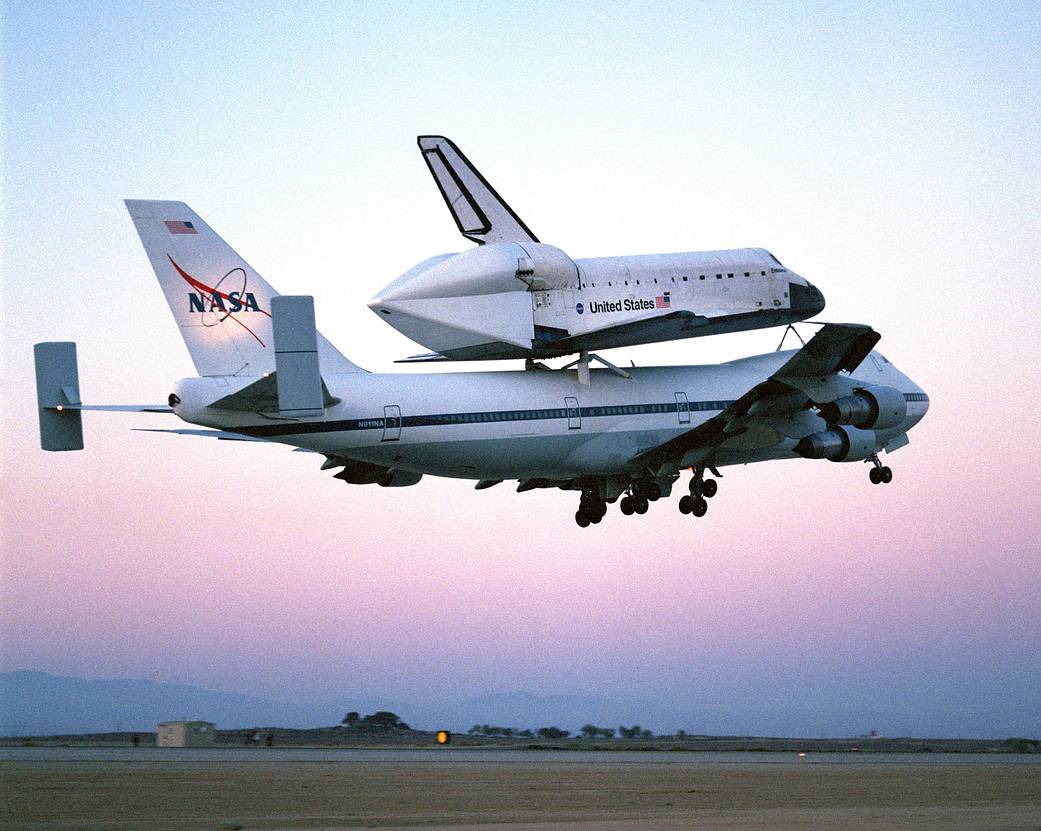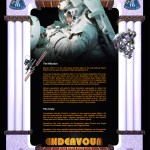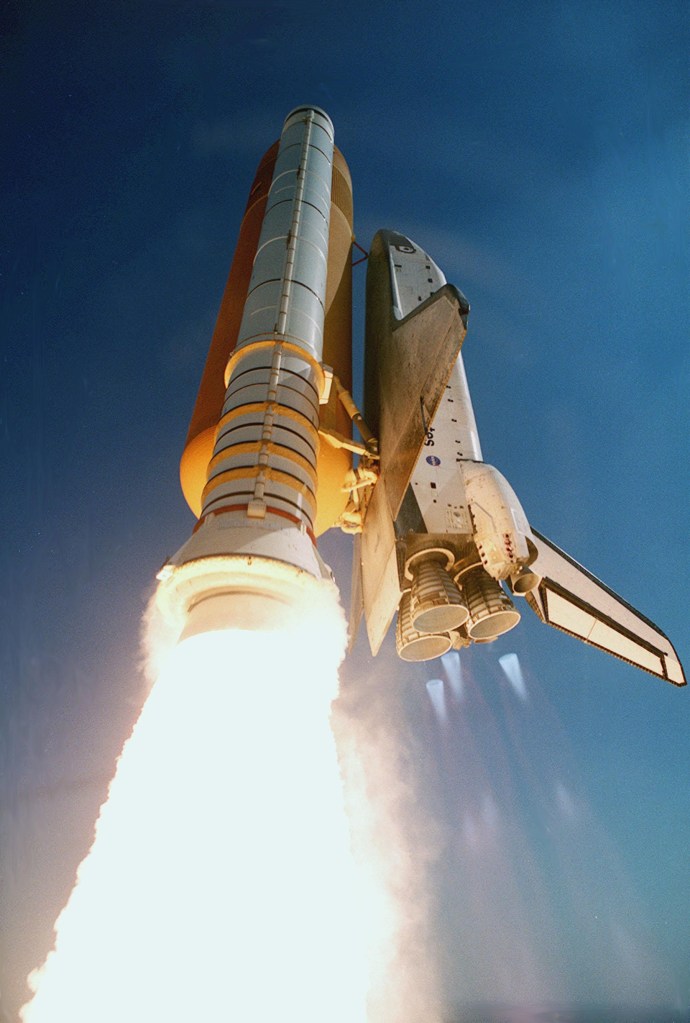
STS-111
STS-111 dropped off the Expedition Five crew members at the orbital outpost, and brought back the Expedition Four trio at mission's end.
orbiter
mission duration
Launch
Landing

Mission Facts
Mission: International Space Station UF2
Space Shuttle: Endeavour
Launch Pad: 39A
Launched: June 5, 2002, 5:22:49 p.m. EDT
Landing Site: Edwards Air Force Base Calif.
Landing: June 19, 2002, 1:58:45 p.m. EDT
Runway: 22
Rollout Distance: 9,576 feet
Rollout Time: 64 seconds
Revolution: 217
Mission Duration: 13 days, 20 hours, 35 minutes and 56 seconds
Miles Traveled: 5.8 million
Crew
Kenneth D. Cockrell, Commander
Paul S. Lockhart, Pilot
Philippe Perrin, Mission Specialist
Franklin R. Chang-Diaz, Mission Specialist
Launch Highlights
The launch originally set for May 30 was scrubbed due to weather concerns. It was rescheduled for May 31; technicians, however, had detected pressure differentials in the gaseous nitrogen pressure on the left Orbital Maneuvering System pod aboard Endeavour during the launch count on May 30. Managers elected to replace the component and moved the launch of STS-111 to no earlier than June 4. Due to the uniqueness of the change-out and the work required to build a test fixture, launch of Endeavour was again postponed until June 5.
Mission Highlights
June 7, Mission Specialist Franklin Chang-Diaz equaled a space flight record with his seventh shuttle flight, tying astronaut Jerry Ross. After docking with the ISS, linking to the Destiny Lab’s forward docking port, the Endeavour and ISS crews transferred equipment, supplies and experiments.
The Expedition 4 crew — Yuri Onufriyenko, Daniel Bursch and Carl Walz — unofficially ended their 182-day residence aboard ISS, and the Expedition 5 crew — Commander Valery Korzun, Flight Engineer Peggy Whitson and Sergei Treschev — began their tenure.
June 8, using the shuttle’s robotic arm, Commander Kenneth Cockrell moved the Multi-Purpose Logistics Module Leonardo from Endeavour’s payload bay to the Unity module. Transfer began more than 5,600 pounds of cargo to the ISS. Leonardo carried a total of 8,062 pounds of supplies and equipment to the space station, including a new science rack to house microgravity experiments and a glovebox that will allow station crews to conduct experiments requiring isolation.
June 10, Whitson and Walz used the Canadarm2 to move the Mobile Remote Service Base System (MBS) from Endeavour to the Mobile Transporter on the Destiny Lab. The MBS, part of the station’s Mobile Servicing System, will allow the Canadarm2 to travel the length of the station for construction tasks. The official change of command ceremony between the two Expedition crews followed.
June 12, the crews stowed 4,500 pounds of supplies and hardware in the Leonardo MPLM for return to Earth. Payload bay cameras captured views of the Colorado wildfires, visible from the 240-mile-high orbit of Endeavour/ISS.
Perrin returned the Leonardo MPLM to the shuttle’s payload bay June 14. The MPLM is filled with 4,667 pounds of equipment and supplies no longer needed on the station.
June 15 Endeavour undocked from the ISS, flying one and a quarter laps around the station before final separation.
Landing opportunities at Kennedy Space Center June 17-19 were waived due to low cloud cover, rain and thundershowers in the landing area.
EVA No. 1: 7 hours, 14 minutes — In their first ever spacewalk, Mission Specialists Franklin Chang-Diaz and Philippe Perrin installed a Power and Data Grapple Fixture to the station’s P6 truss. The fixture will be used to relocate the P6 truss to its final site on the station.
They retrieved six micro-meteoroid debris shields from Endeavour’s cargo bay and temporarily stored them on PMA-1. They will ultimately be installed on the Zvezda Service Module.
A newly added task required the two astronauts to inspect and photograph the failed control moment gyroscope on the Z1 truss. The photos may help ground controllers understand why the gyroscope failed. Next Chang-Diaz and Perrin removed thermal blankets from the MBS and positioned it above the Mobile Transporter to thermally condition it before mating it on EVA No. 2.
EVA No. 2: 5 hours — Chang-Diaz and Perrin connected primary and backup video and data cables and primary power cables between the Mobile Transporter rail car and the MBS. They deployed an auxiliary grapple fixture, the Payload Orbital Replacement Unit Accommodation (POA), on the MBS. The POA will be able to grapple payloads and hold them as they are moved along the station’s truss atop the MBS.
The two astronauts secured four bolts to complete installation of the MBS platform. They also relocated a TV camera on top of the MBS to provide views of station assembly and maintenance operations.
EVA No. 3: 7 hours, 17 minutes — Chang-Diaz and Perrin replaced the wristroll joint on Canadarm2, restoring it to full use. The faulty joint was secured in a flight support structure in Endeavour’s cargo bay. Perrin removed the new joint from its launch carrier and brought it up to Chang-Diaz and the Canadarm2. The duo aligned the new component with the wrist yaw joint, tightened six bolts to secure the joint to the arm and turned the final bolt to connect power, data and video lines.
After reinstalling the latching end effector, power to the arm was turned back on. The arm returned to full operational status at 4:43 p.m. EDT.
This was the 41st spacewalk supporting ISS assembly, bringing the total mission EVA time to 19 hours, 31 minutes.
STS-111
Resources
Shuttle News
Retired Space Shuttle Locations
Shuttle Atlantis – Kennedy Space Center Visitor Complex Shuttle Discovery – Steven F. Udvar-Hazy Center Shuttle Endeavour – California Science…
Read the Story











































